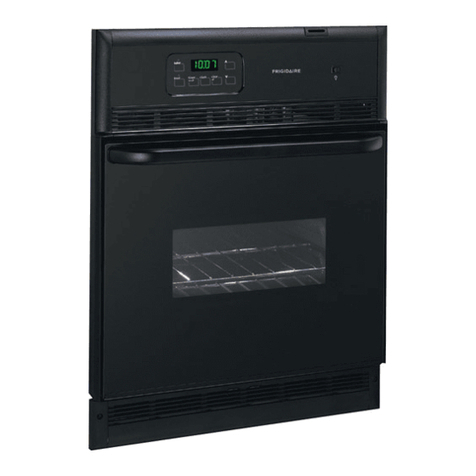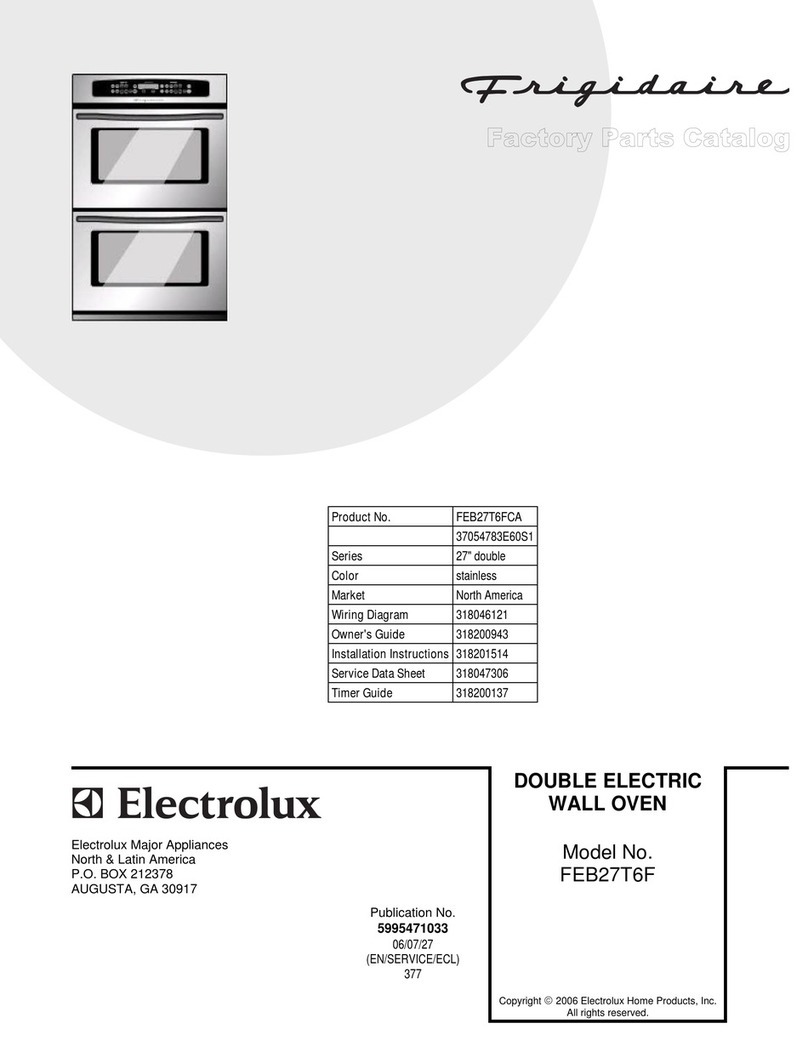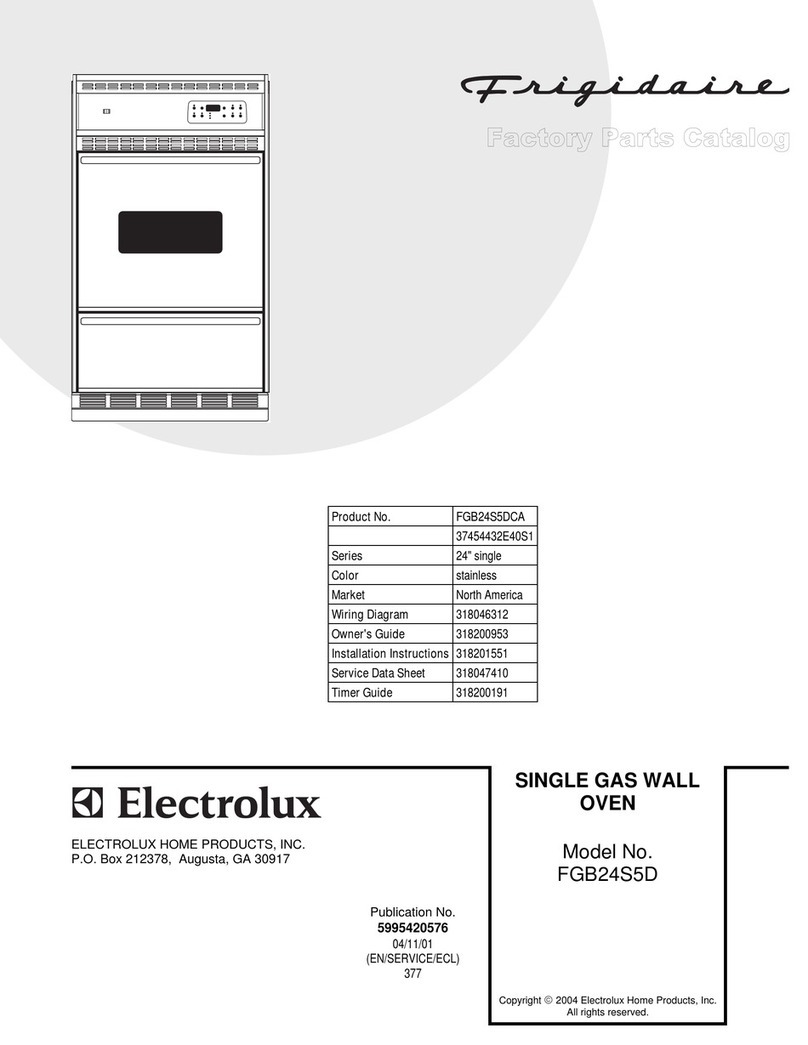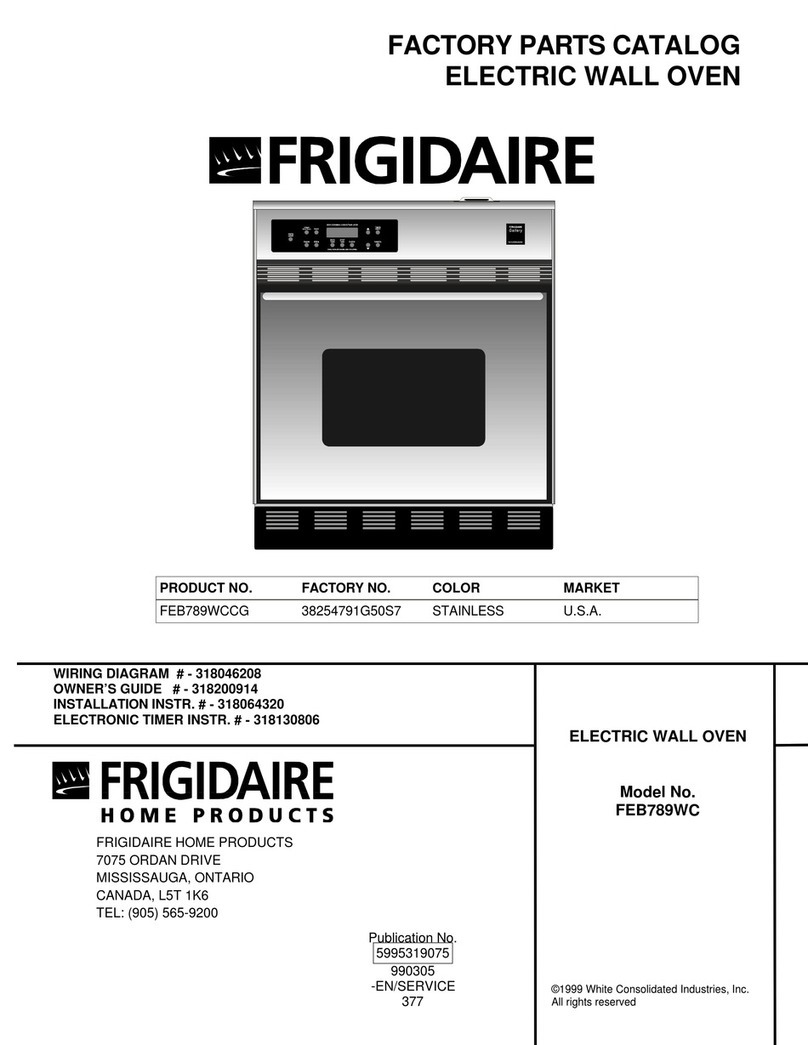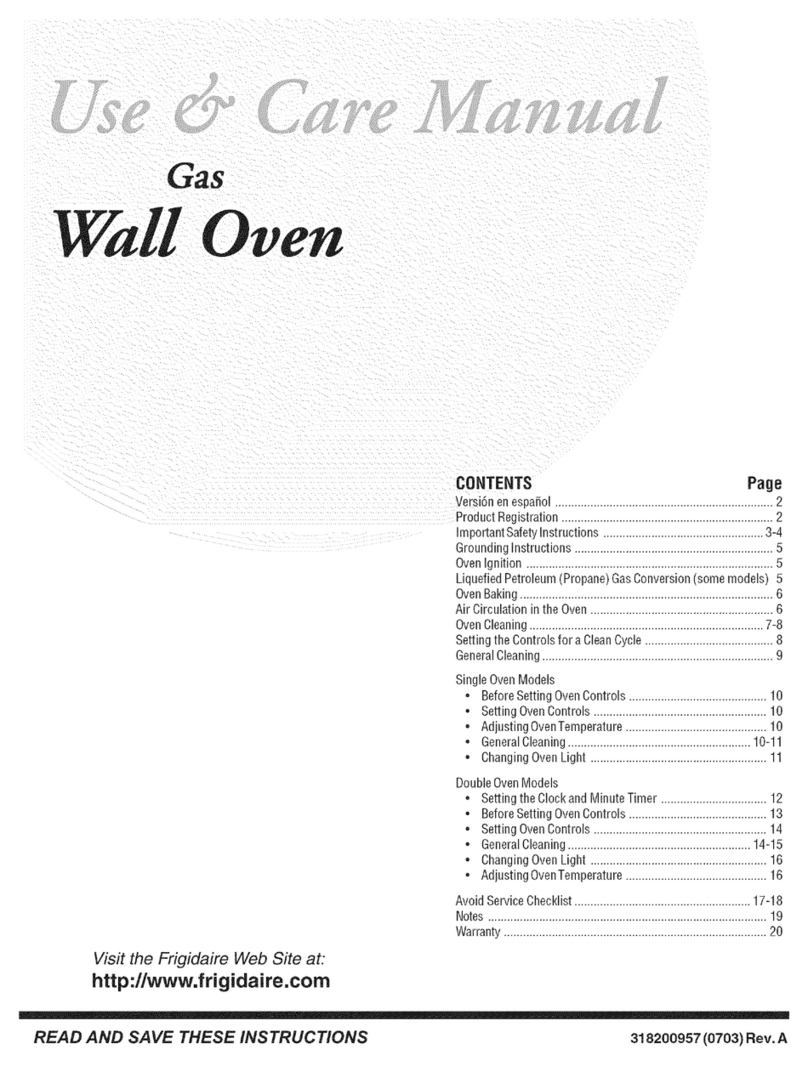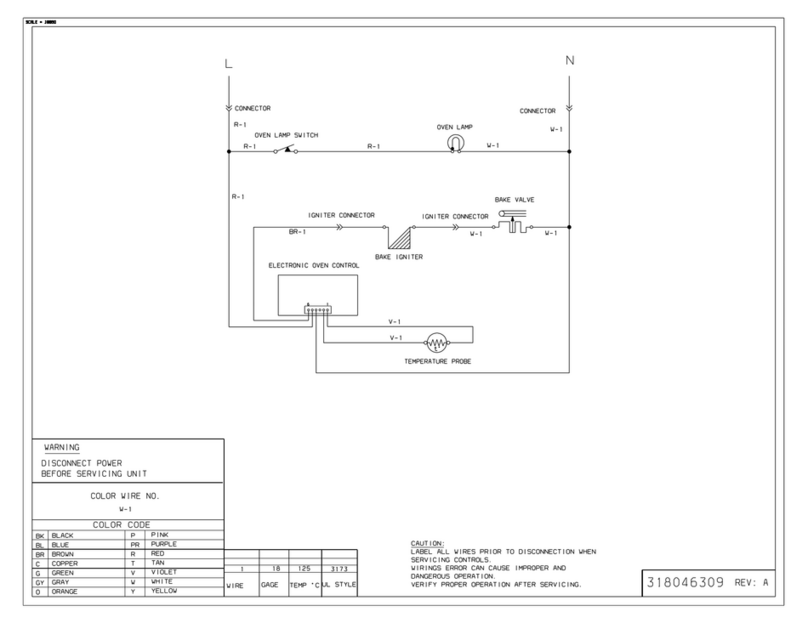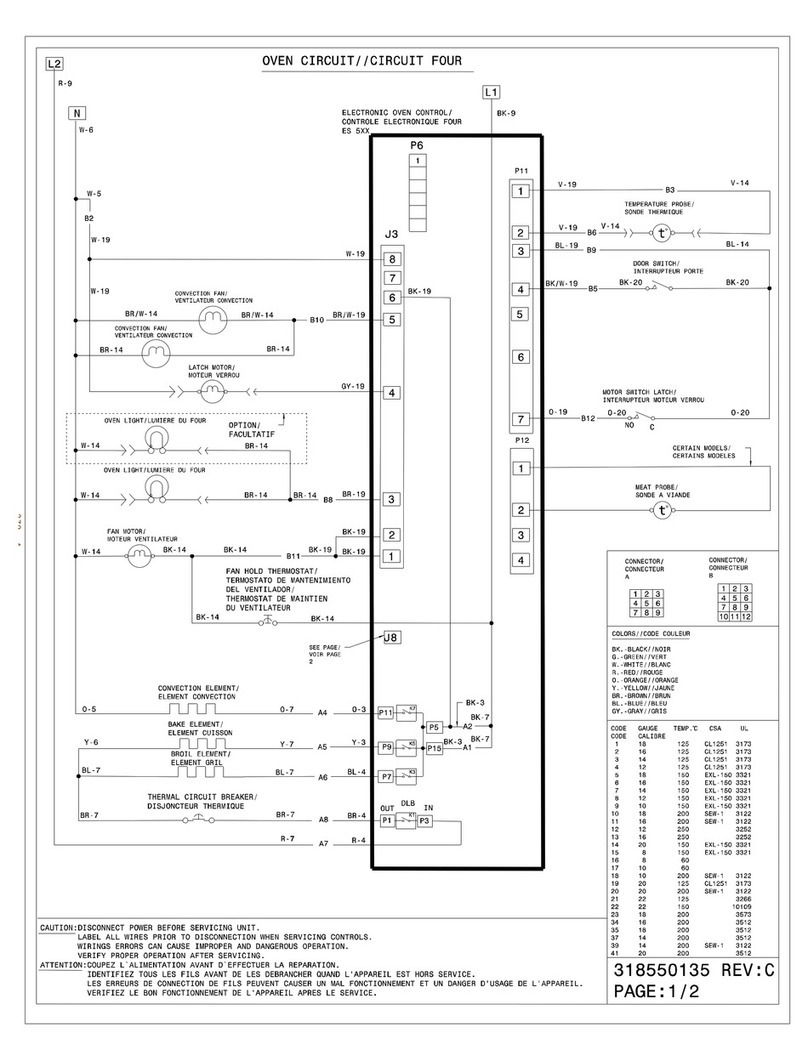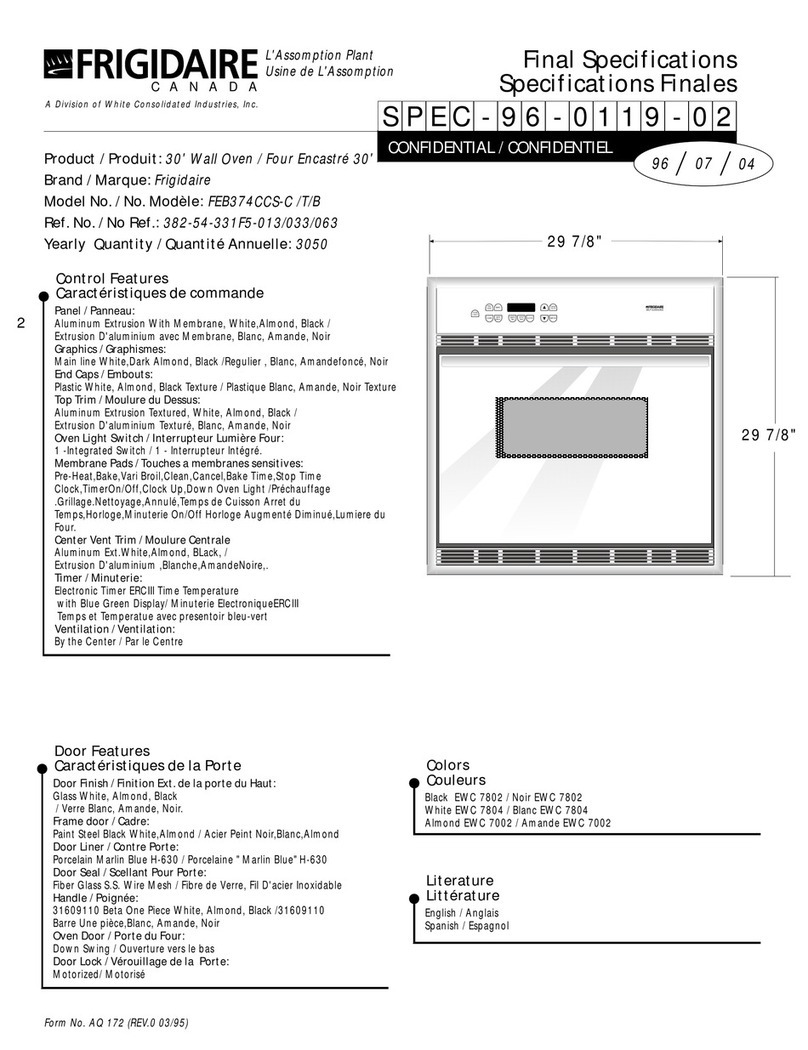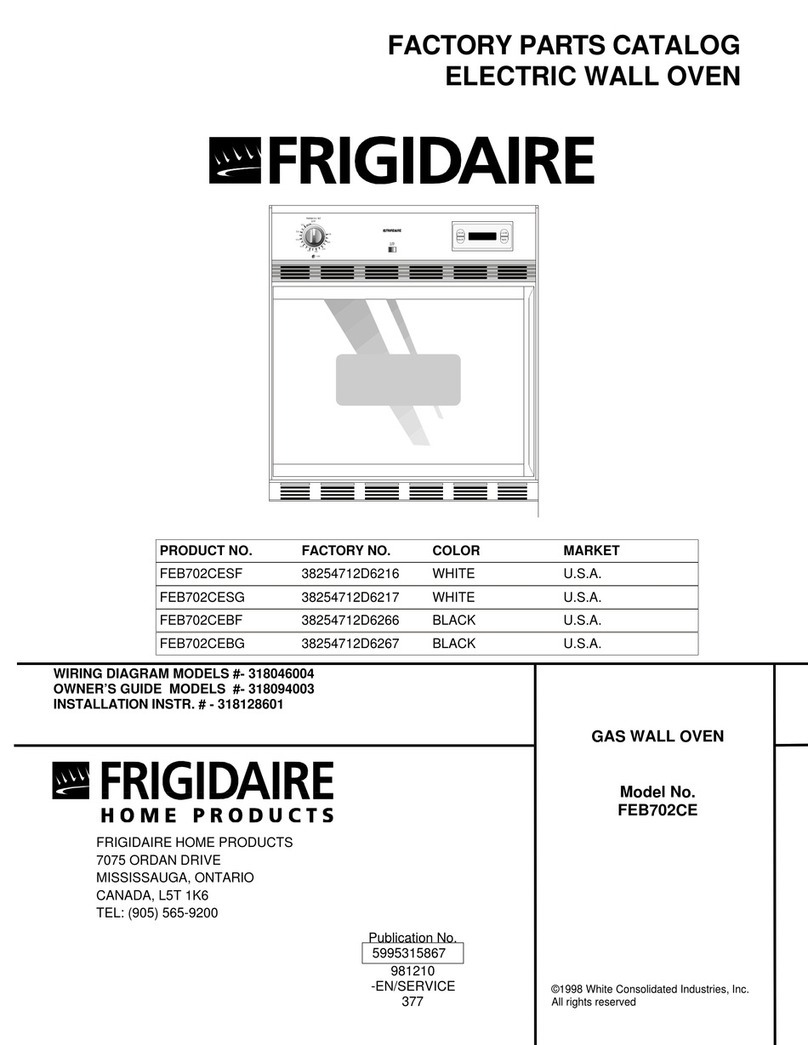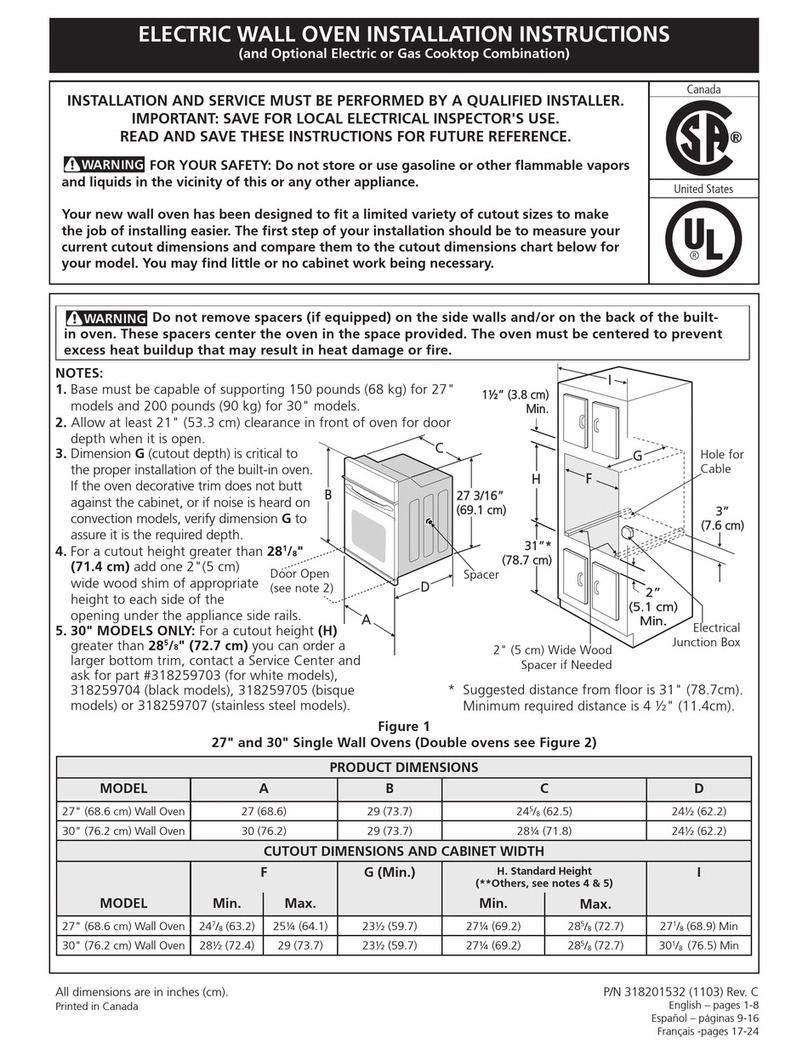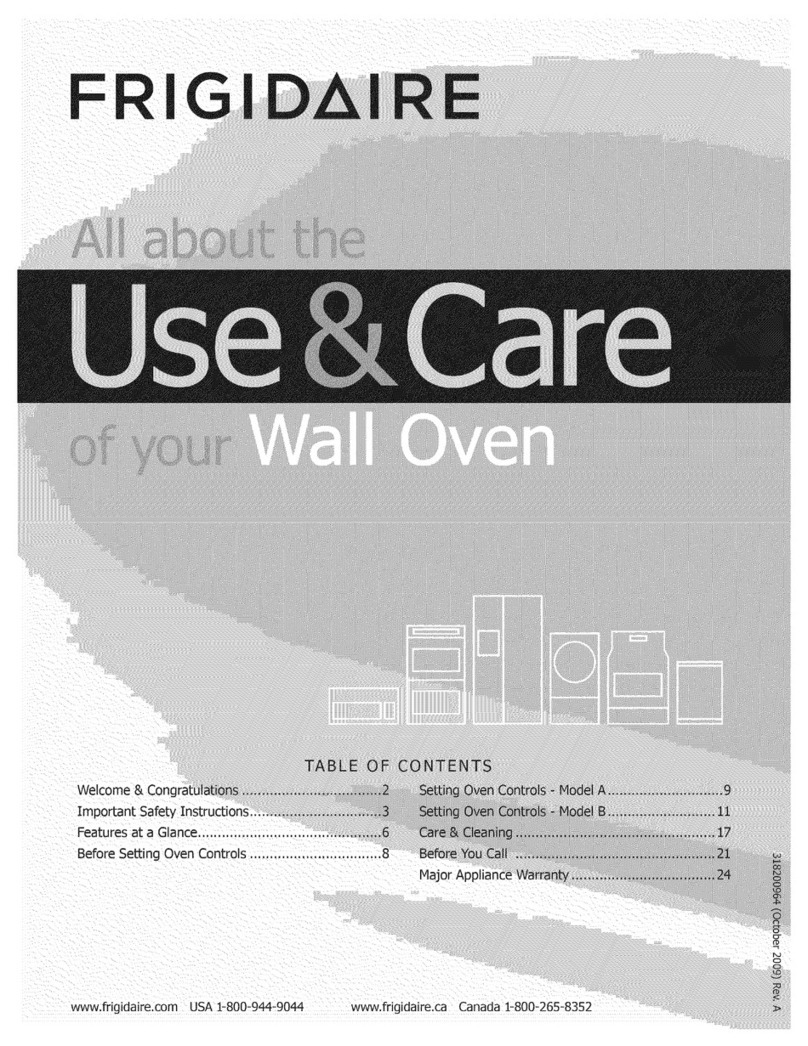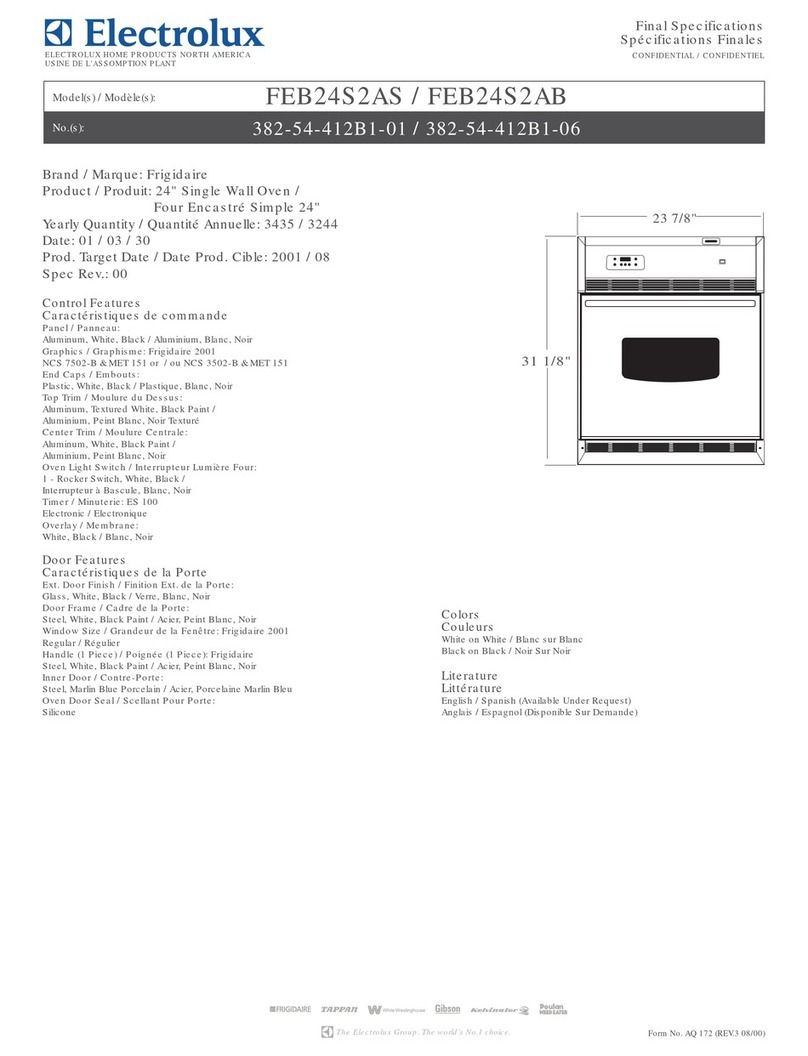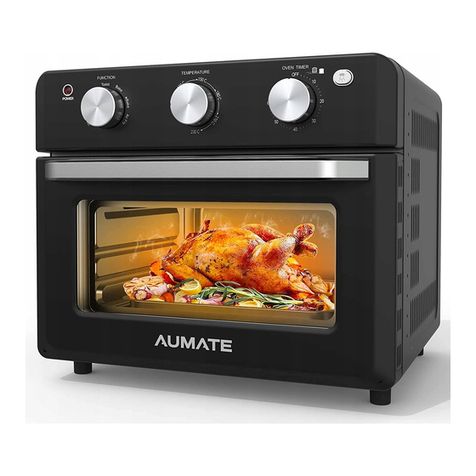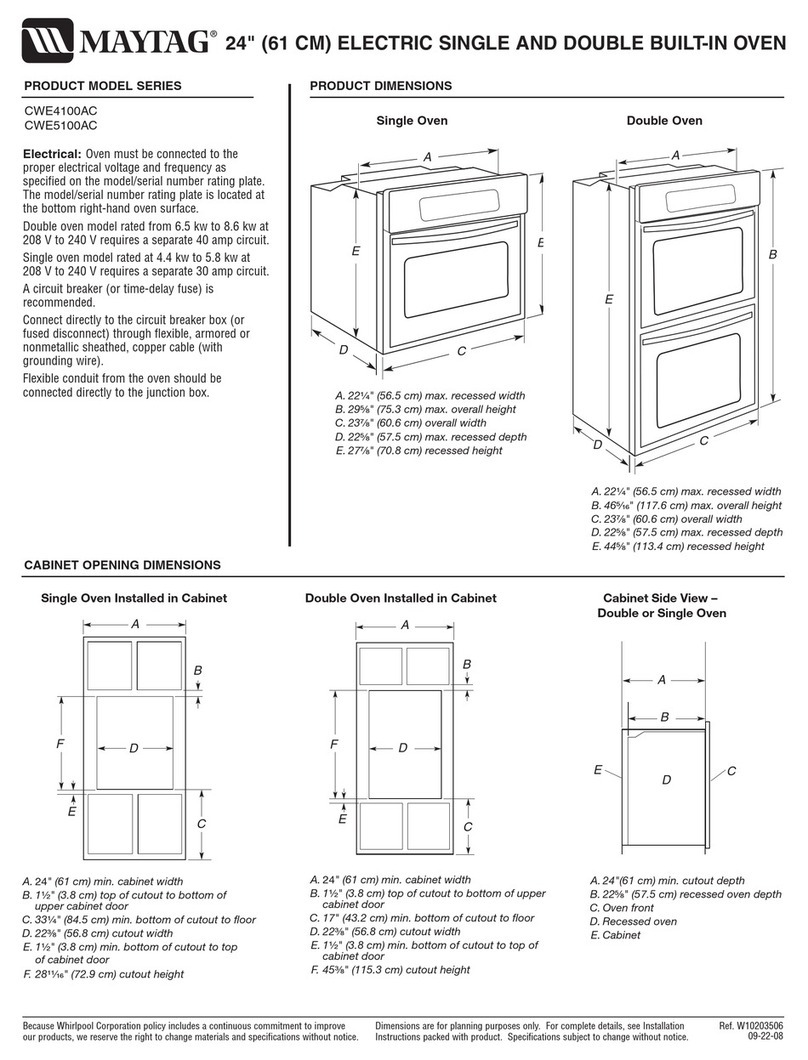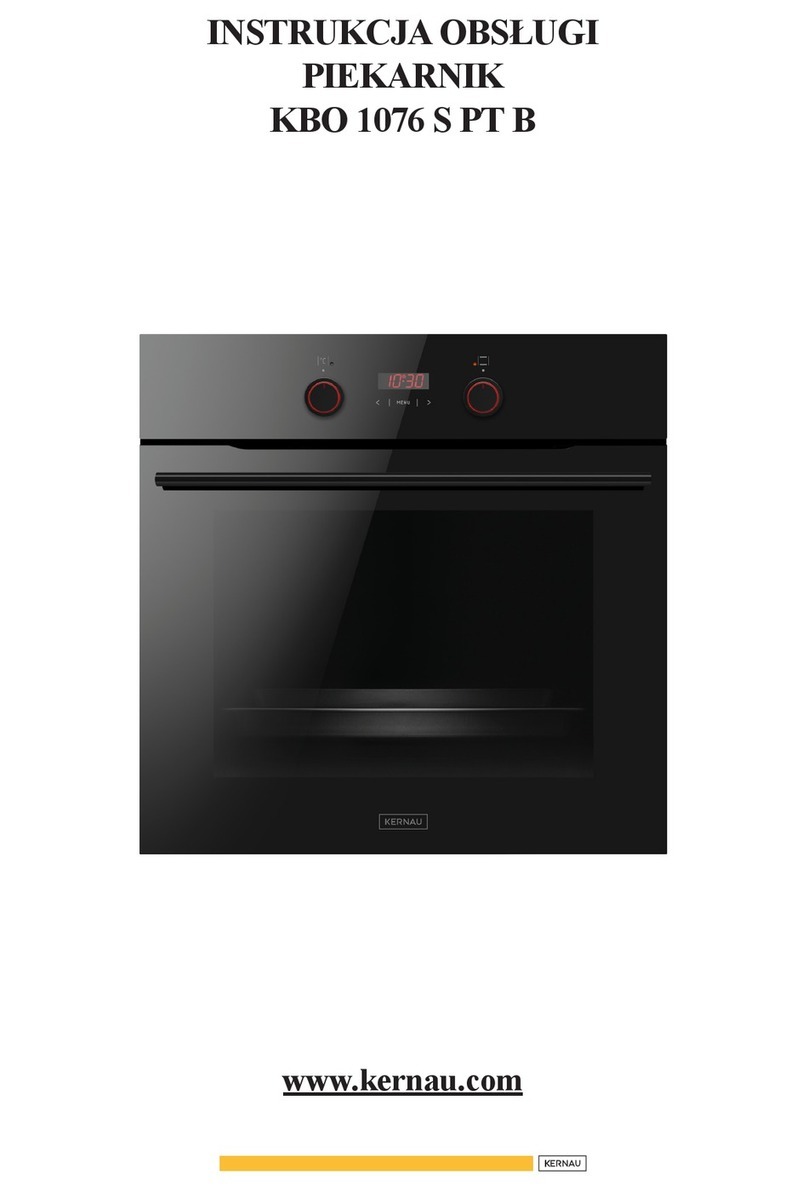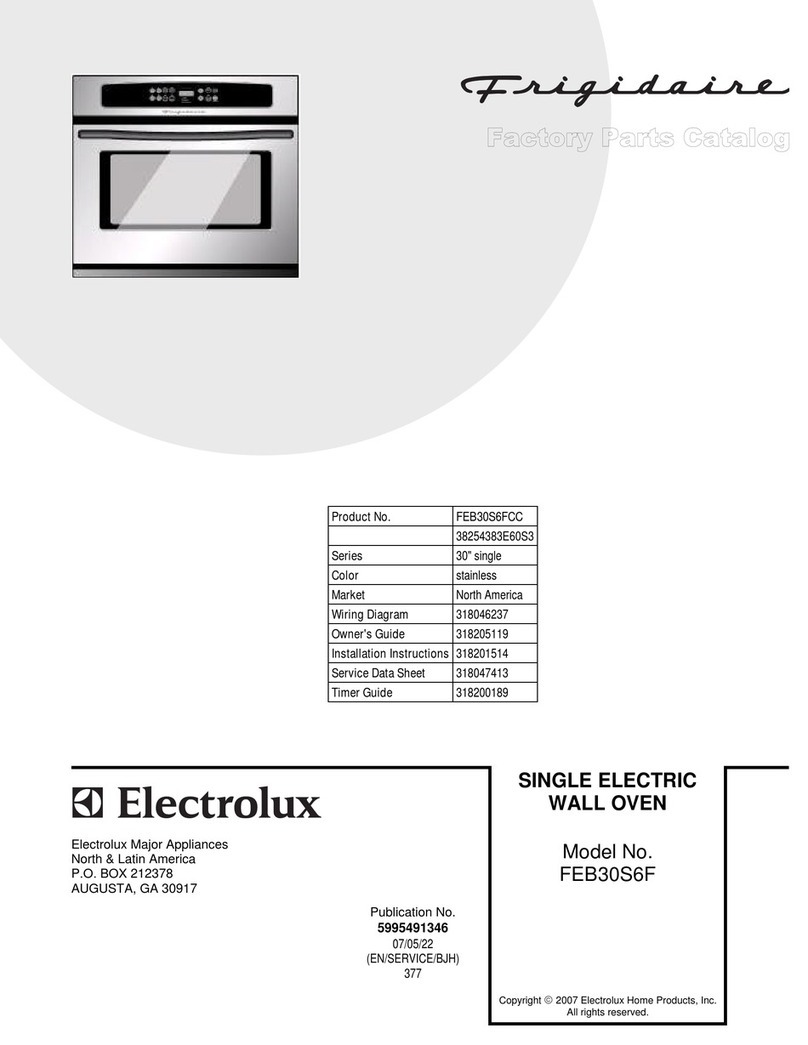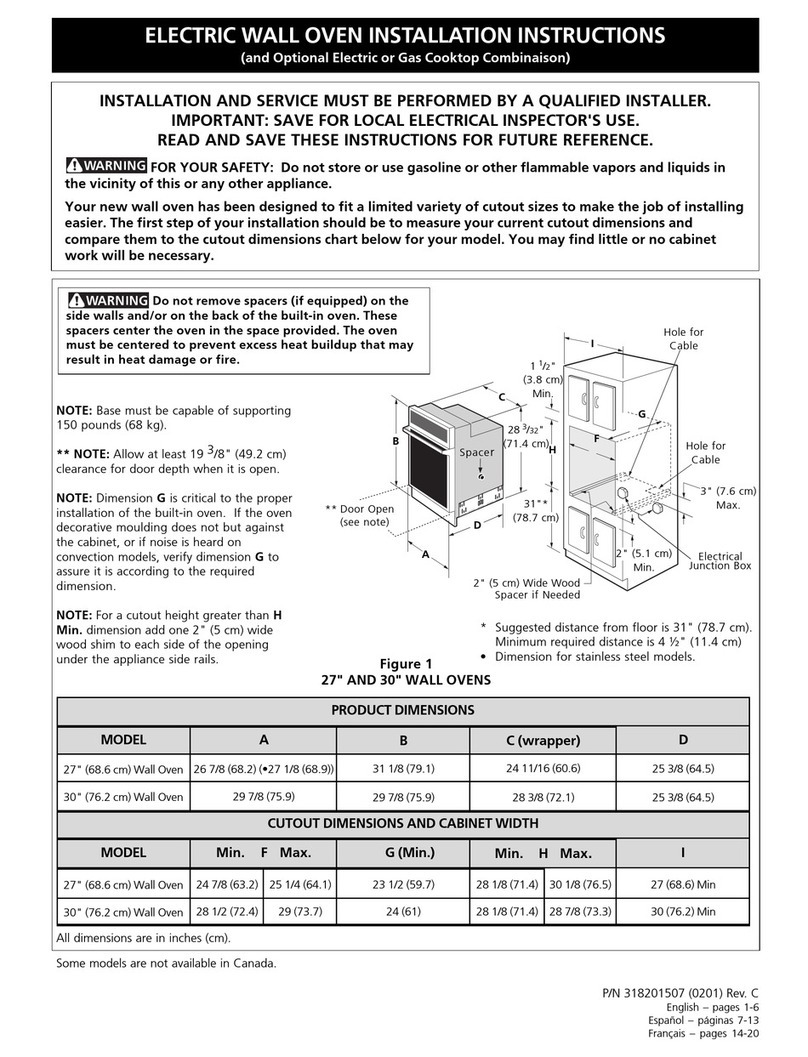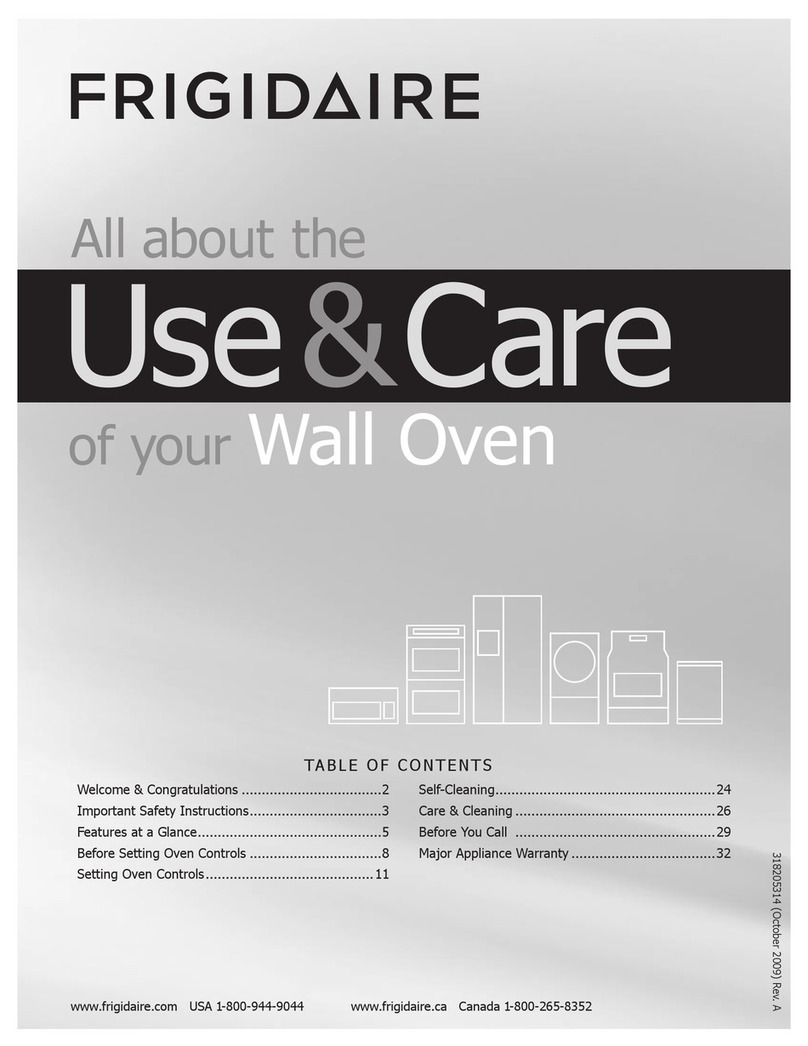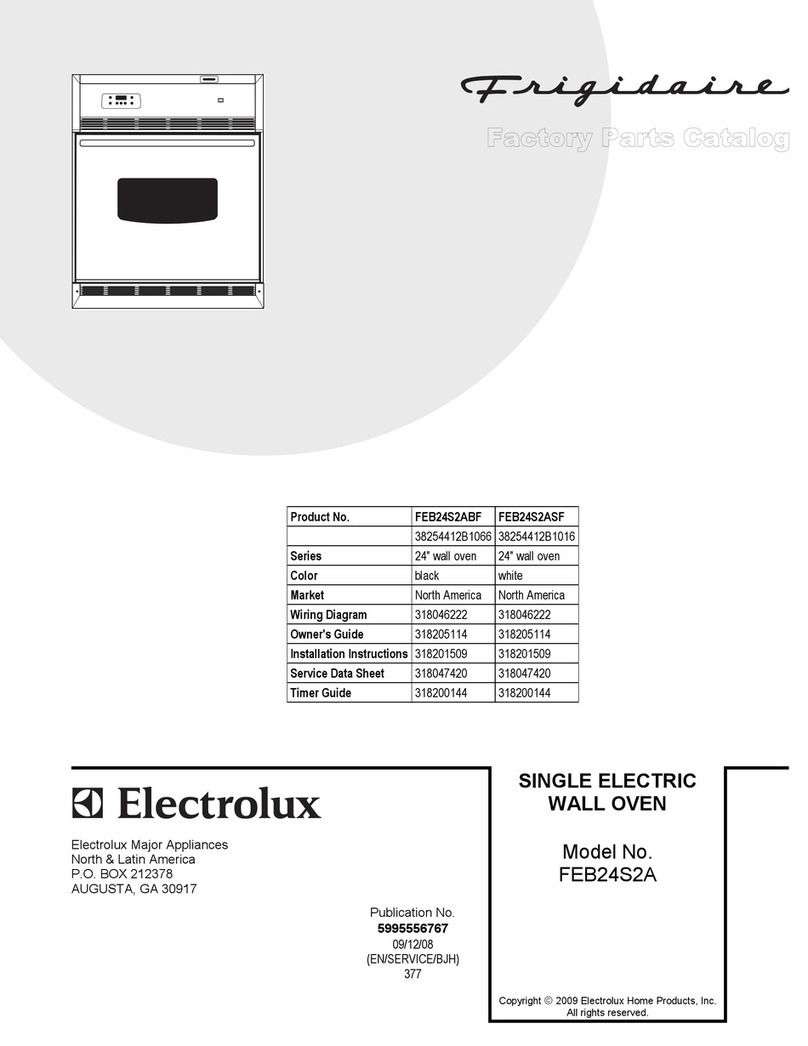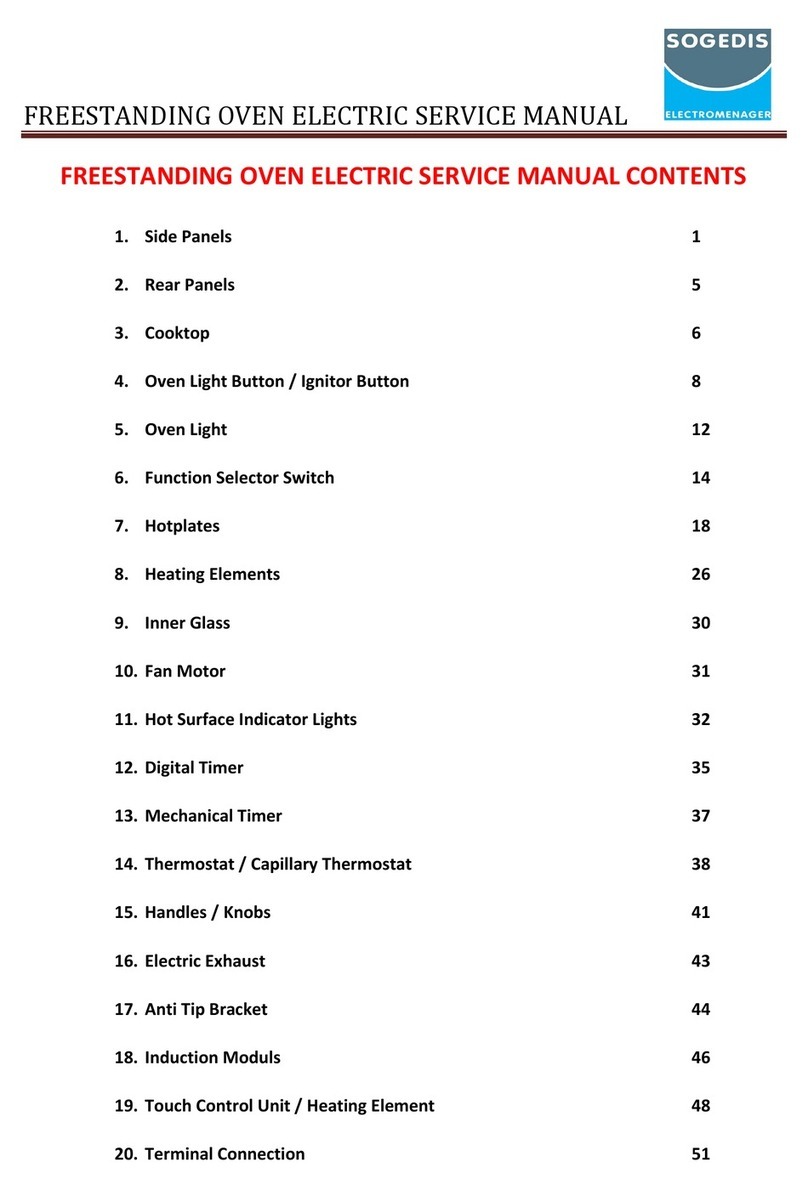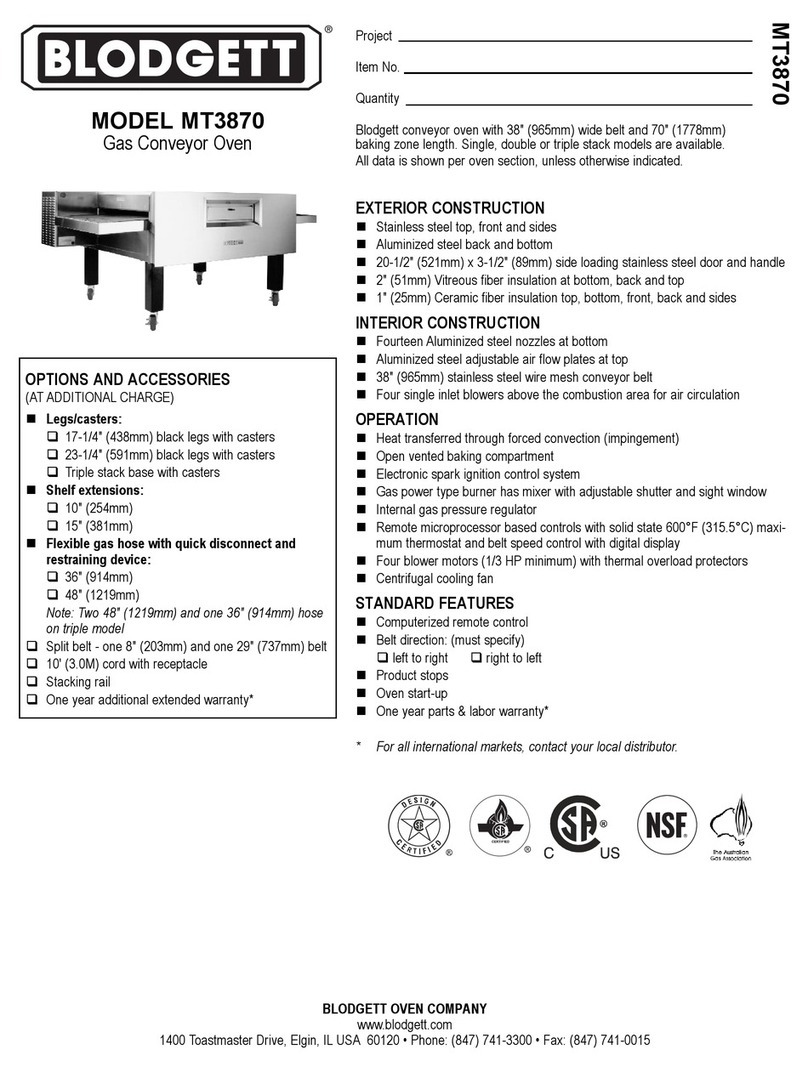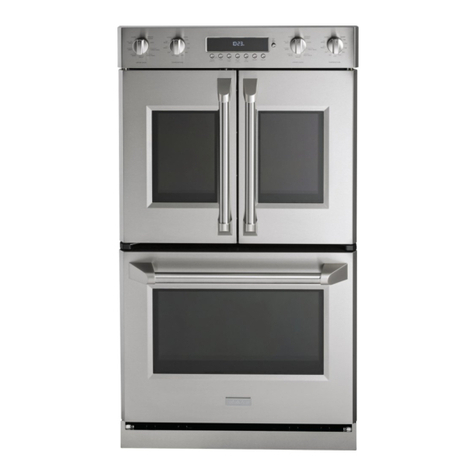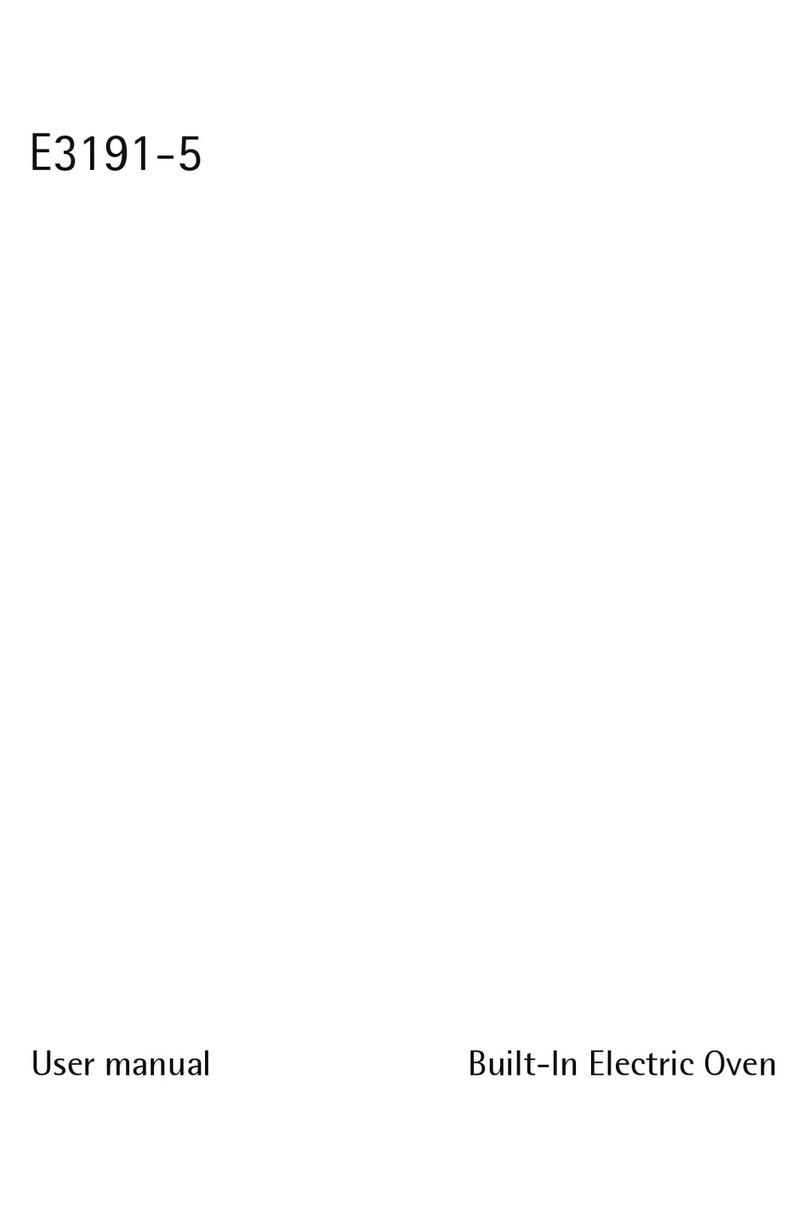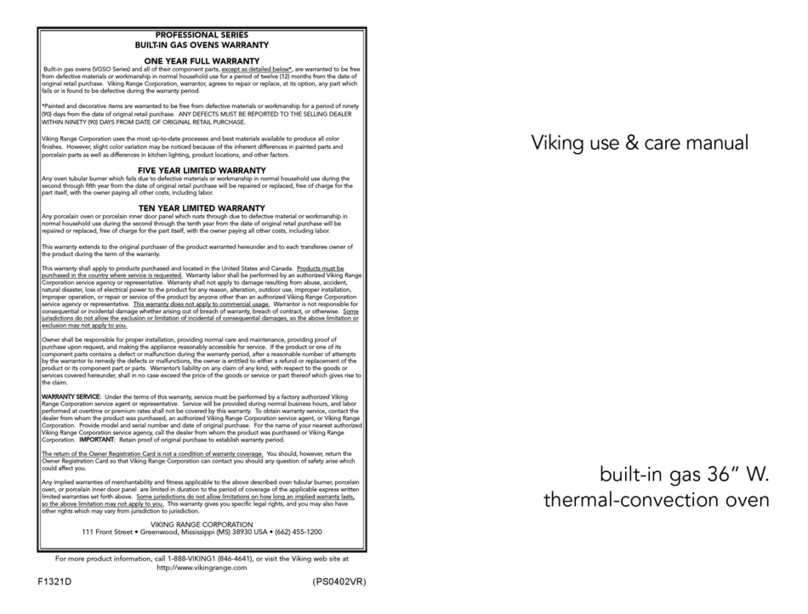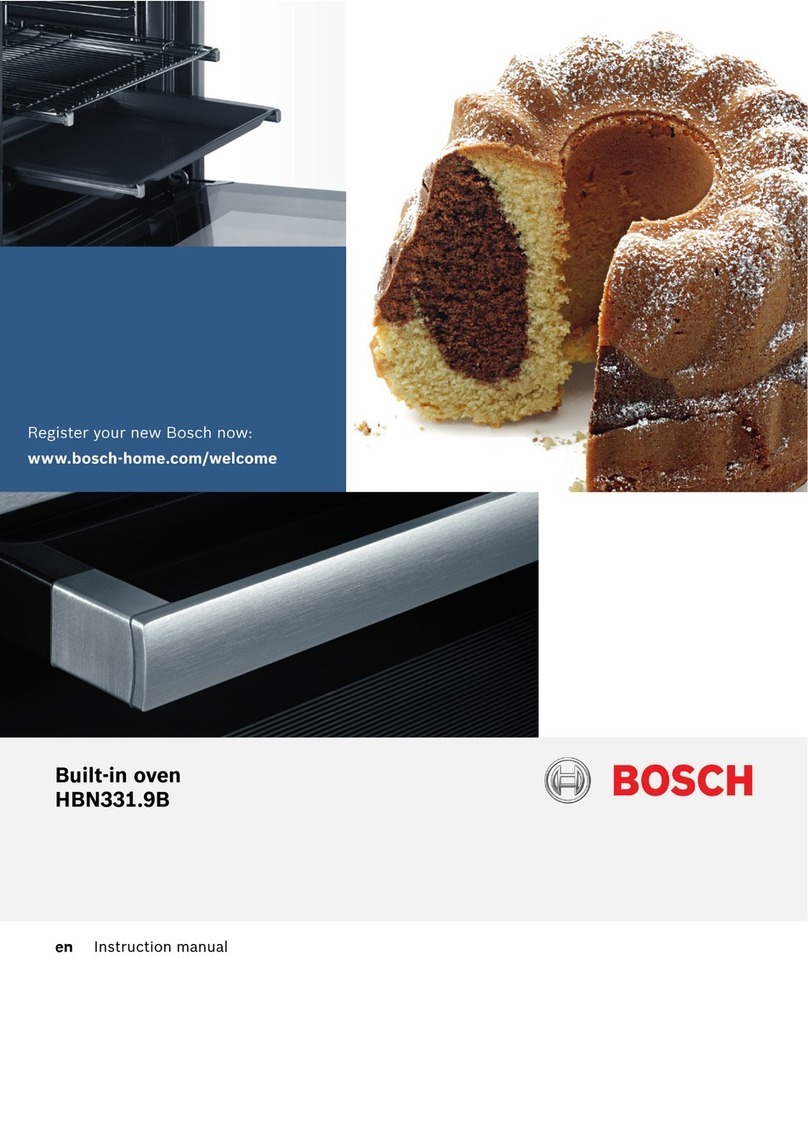
Care&Cleaning
Serf-Cleaning (somemodeUe)
Serf-Cleaning Oven
A Seff-CUeaning oven deans itseff with high temperatures (well above cooking
temperatures) which eliminate soils compUeteUyor reduces them to a fine
powdered ash you can wipe away with a damp cloth,
Adhere to the following cJeaning precautions:
o AHow the oven to cooUbefore cUeaning,
o Wear rubber gbves when cleaning any exterior parts of the oven manually,
o DO NOT use commercial oven cleaners or oven protection coatings in or
around any part of the self-cleaning oven,
o DO NOT clean the oven door gasket, The woven material of the oven door
gasket is essential for a good seal, Care should be taken not to rub, damage or
remove the gasket,
o DO NOT use any cleaning materials on the oven door gasket, Doing so could
causedamage,
o Remove aH utensils and any aJuminum foit. These items cannot withstand
high cteaning temperatures.
,, Oven racks do not have to be removed, if they are not removed during the
Self-Clean cycle their color will turn slightly blue and the finish will be dull, If
left in, after the cycle is complete and the oven has cooled, rub the sides of the
oven racks with wax paper or a cloth containing a small amount of salad oil
(this will make the racks glide easier into the rack position),
o Remove any excessive spiHovers in the oven cavity before starting the Selfo
Cleaning cycle, To clean, use hot, soapy water and a cloth, Large spillovers
can cause heavy smoke or fire when subjected to high temperatures, DO NOT
allow food spills with a high sugar or acid content (such as milk, tomatoes,
sauerkraut, fruit juices or pie filling) to remain on the surface as they may leave
a dull spot even after cleaning,
o Clean any soil from the oven frame, the door liner outside the oven door gasket
and the small area at the front center of the oven bottom, These areas heat
sufficiently to burn soil on, Clean with soap and water,
NOTE: Prior to setting the SelfoClean cycle, any spills remaining on the oven
bottom should be removed,
Some models have an exposed Bake element in the lower oven cavity, On these
models the bake element isdesigned to be tilted up using your hand from the front of
the bake element, This will allow easier access to the oven bottom for cleaning, Be
careful not to raise the element more than 4 or 5 inches from the resting position,
The oven bake and broil elements may appear to have cooled after
they have been turned OFF, The elements may still be hot and burns may
occur if these elements are touched before they have cooled sufficiently,
What to Expect during Cleaning:
While the oven is in operation, the oven heats to temperatures much higher than those
used innormal cooking, Sounds ofmetal expansion and contraction are normal, Odoris
also normal as thefood soil isbeing removed, Smoke may appearth rough theoven vent,
If heavy spillovers are not wiped up before cleaning, they may flame and cause more
smoke and odor than usual, This is normal and safe and should not cause alarm, If
available, use an exhaust fan during the self-cleaning cycle,
During the self-cJeaning
cycJe, the outside of the wall oven can
become very hot tothetouch. DO NOT
teave small children unattended near
the appliance.
The health of some birds
is extremely sensitive to the fumes given
off during the self-clean cycle of any wall
oven, Move birds to another well
ventilated room,
DO NOT line the oven
walls, racks, bottom or any other part of
the appliance with aluminum foil, Doing
so will destroy heat distribution, produce
poor baking results and cause permanent
damage to the interior (aluminum foil will
melt to the interior surface of the oven),
DO NOT force the oven
door open, This can damage the
automatic door locking system, Use
caution when opening the door after the
SelfoCleaning cycle is completed, The
oven may still be VERY HOT,
DO NOT
HAND
CLEAN OVEN
DOOR
GASKET
\DO HAND
CLEAN FRAME
DO HAND
CLEAN DOOR
Note: See additional cleaning
information for the oven door in the
GeneraJ Care & Cteaning section,
To Set the Se f-C ean Cycle
Refer to the Oven Control Guide for Self-Clean Cycle settings,
10
